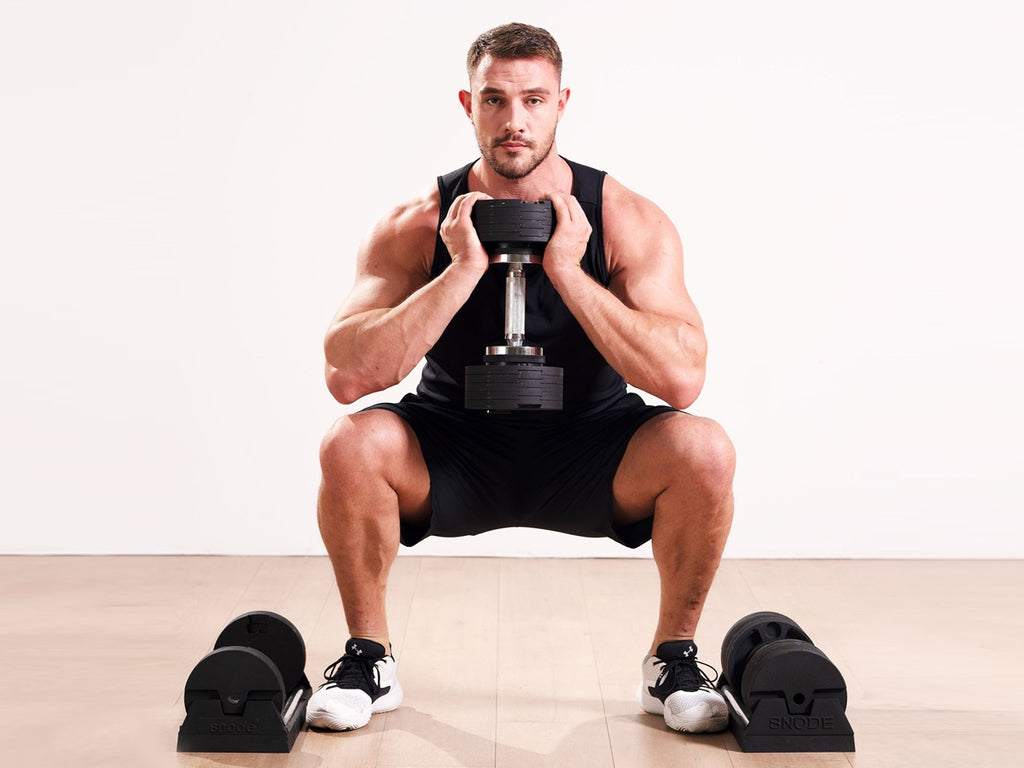How to Find the Right Dumbbell Weight
"Yeaahhhh buddy!"—just like stepping into the gym ready to conquer those dumbbells, choosing the right weight is all about getting pumped and ready for action. In today’s post, we’ll help you find the best dumbbell weight by considering the 6 things below:

1. Assessing Your Fitness Level
Jumping into weight training? Pick Lighter weights: 5 to 10 pounds for men and 2 to 5 pounds for women. In this way, you can learn and grow in a safe way.
If you've been around the weight training block and understand your strengths fairly, it's time to push your limits gently. The idea here is to make progressive adjustments, ensuring that each step up in weight feels like a manageable push forward.
Well, for those of you skillfully experienced in strength training, moving on to heavier weights is necessary to further muscle growth and enhance strength. At this stage, it’s about fine-tuning your workout regimen and incrementally adding more weight to push your limits while ensuring continued progress.
2. Considering Your Training Goals
Endurance: Want to boost your muscle stamina? Go for a weight that enables you to perform a higher repetition range. We're talking about a rep range of 12 to 20 per set. This approach improves endurance by encouraging muscular efficiency over longer periods.
Muscle Growth (Hypertrophy): For those looking to increase muscle volume, selecting a weight that challenges you within a 6 to 12 rep range per set is optimal. This rep and weight combination is scientifically backed to promote significant muscle growth.
Strength Building: To focus on enhancing your strength, opt for weights that limit you to a lower range of 1 to 6 reps per set. This strategy emphasizes lifting heavier weights for fewer repetitions, a proven method to increase muscular strength.
3. Evaluating the Exercise
Upper Body Workouts: These generally demand lighter weights since they often target smaller muscle groups, such as those involved in biceps curls or lateral raises. In contrast, exercises engaging larger muscles—like chest presses or rows—will require heavier dumbbells. This differentiation ensures that both small and large muscle groups can be effectively worked out without risking overexertion.
Lower Body Workouts: Given that the muscles in the lower body are inherently stronger, they naturally tolerate and, indeed, require heavier weights to be effectively challenged. Thus, for exercises like squats and lunges, selecting heavier dumbbells is advisable to ensure these robust muscle groups are adequately stimulated for growth and strengthening.

To get more workout plan for upper and lower body: How to Plan Your Dumbbell Workout Split
4. Perform a Test Set
Trial and Error: Begin by selecting a weight suitable for your target number of repetitions. If completing all repetitions proves manageable without strain or breaking form, progressively increase the dumbbell weight by small increments in the next session. However, if maintaining consistent quality technique feels like a struggle at heavier attempted loads, reduce weight following the set instead. This method is straightforward yet effective in finding a starting point that challenges you without compromising on safety or form.
Challenging Yet Achievable Reps: The intensity of your workout can often be gauged in the last few repetitions of a set. The final 2-3 reps should feel challenging without compromising form. If these feel easy, it indicates your muscles are ready for a heavier weight. This balance ensures that you are continually pushing your boundaries safely.
5. Listen to Your Body
Listening to your body is crucial in distinguishing between the natural strain of a productive workout and the warning signs of potential injury. While some degree of muscle soreness is normal, any form of pain, especially in the joints, should be taken seriously. This could signal that the weights you're using are too heavy, or there might be issues with your workout form. Adapting based on these signals is key to avoiding injury and ensuring the longevity of your training regimen.
6. Progress Gradually
As you build strength and endurance, gradually increasing the weight of your dumbbells is necessary to continue making gains. A useful rule is to increase the weight by approximately 5-10% when you can complete your set comfortably with proper form from start to finish. This strategy of incremental advancement helps continuously challenge your muscles and foster growth and improvements over time.
The Bottom Line
Selecting the right dumbbell weight is highly individualized, reflecting your unique strengths, training experiences, and objectives. It's entirely normal—and recommended—to adjust weights as needed across different exercises.


Leave a comment